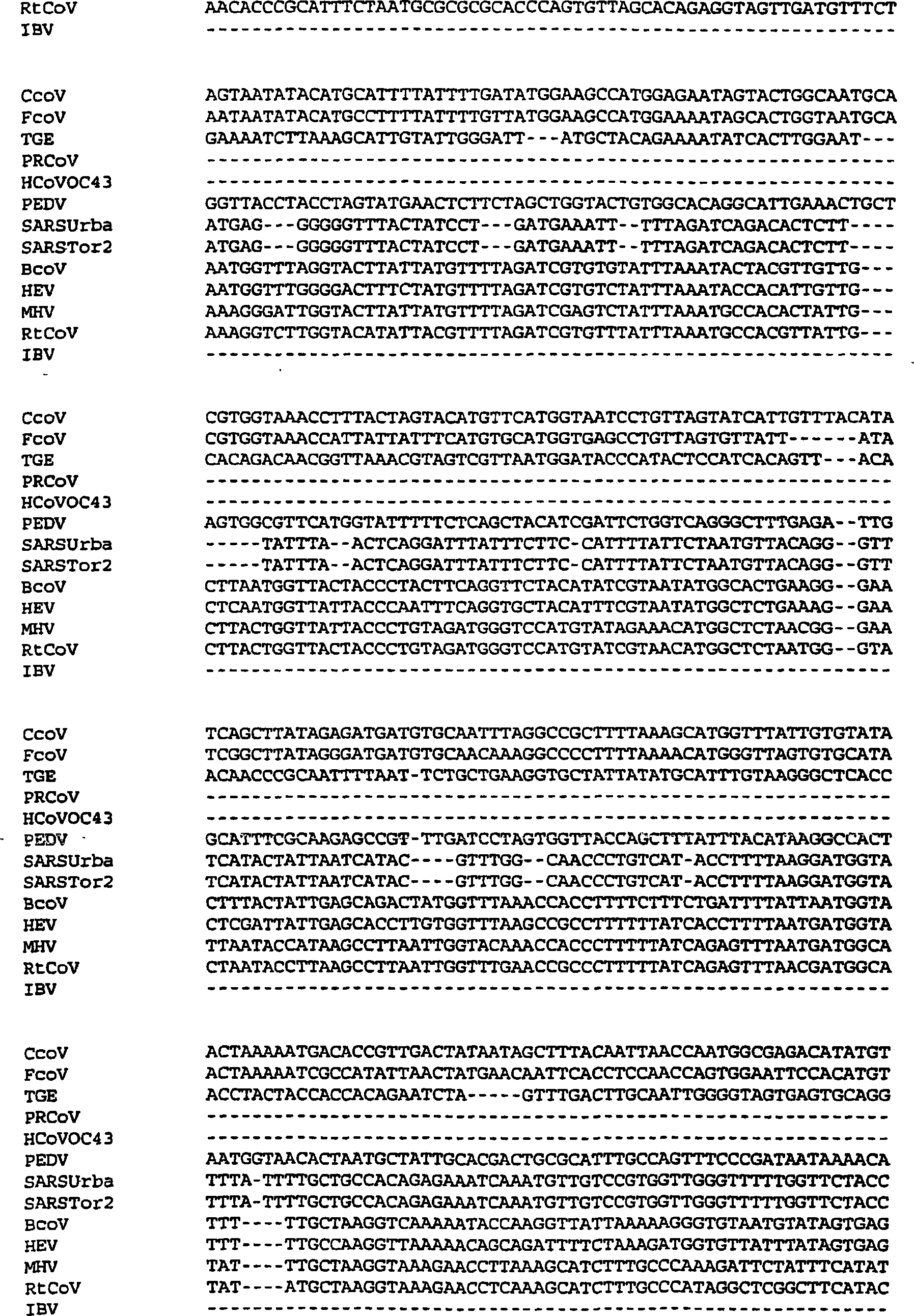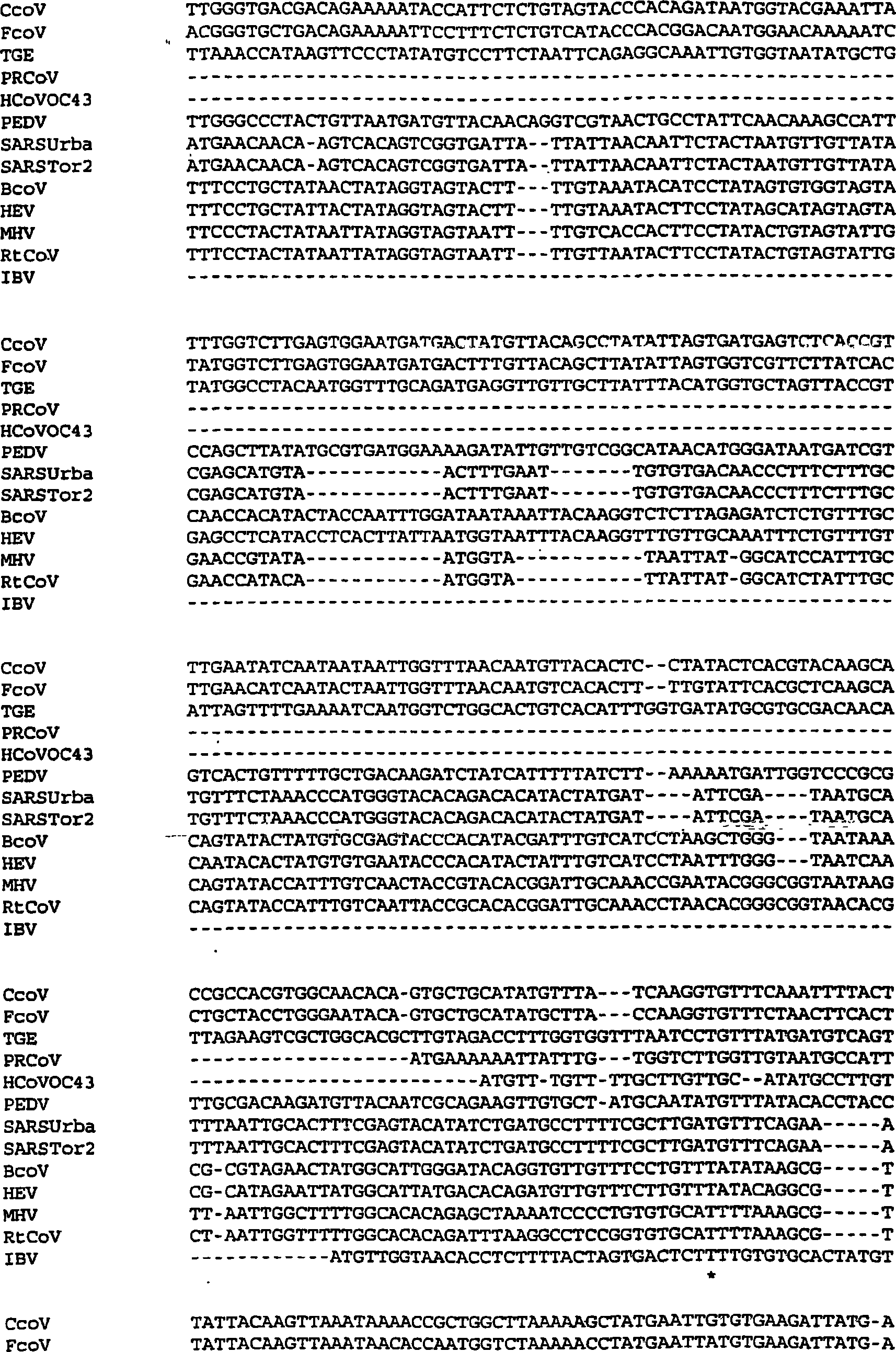Multi-allelic molecular detection of SARS-associated coronavirus
A SARS virus and coronavirus technology, applied in the field of multi-allelic molecular detection of SARS-related coronaviruses, can solve problems such as inability to explain multiple infected people, SARS virus infection, and failure to take into account the polymorphism of coronaviruses
- Summary
- Abstract
- Description
- Claims
- Application Information
AI Technical Summary
Problems solved by technology
Method used
Image
Examples
Embodiment 1
[0051] Example 1 - Molecular Beacons Specific to SARS-CoV,
[0052] And the design of primers required for reverse transcription and PCR
[0053] Purpose: The overall rationale for designing the molecular beacons and oligonucleotides required for this SARS assay was to construct thermodynamically compatible mismatch-tolerant molecules for use in a 5-amplicon multiplex.
[0054] Design: The Molecular Beacon is designed such that it hybridizes to its target at the PCR annealing temperature, while the unbound Molecular Beacon remains in a closed conformation. These basic aspects are achieved by using coronavirus gene-specific multiple comparisons and thermodynamic considerations to select target sequences, identity and length of PCR primers, identity and length of probe sequences (target recognition sequences), and The length of the arm sequence.
[0055] Materials: In order to theoretically calculate the melting temperature of PCR primers and pr...
Embodiment 2
[0059] Example 2 - Experimental Properties of Molecular Beacons and Molecular Beacon-Target Complexes
[0060] Purpose: The general principle of this set of experiments is to evaluate the thermodynamic properties of the constructed molecular beacons before performing real-time PCR experiments.
[0061] Design: For each molecular beacon, we have measured two melting curves using an ABI Prism 7700 Fluorescence Spectrophotometer Thermal Cycler - one for the molecular beacon alone and one for the beacon-target complex curve.
[0062] Materials: For each molecular beacon, its melting curve can be obtained by the following steps: Prepare two tubes of 50 μL dissolved in 3.5 mM MgCl 2 and 200 nM Molecular Beacons in 10 mM Tris-HCl, pH 8.0, to one of the tubes was added a complementary oligonucleotide target to a final concentration of 400 nM.
[0063] The fluorescence of each solution was determined as a function of temperature using a thermal cycler that can monitor fluorescence. ...
Embodiment 3
[0067] Embodiment 3-Using SYBR Green to detect amplicon
[0068] Uniplex SARS-CoV virus and IPC PCR amplification
[0069] Purpose: The general principle of this set of experiments is to evaluate PCR primers and PCR conditions.
[0070] Design: Synthetic target DNA was used for each SARS-CoV gene-specific amplification and IPC amplification. PCR reactions were performed using a spectrofluorometer thermal cycler (Cepheid).
[0071] Materials: The PCR protocol is as follows:
[0072] For S gene:
[0073] (A) Detection of the S gene amplicon (LK250) of SARS-associated CoV based on SYBR Green
[0074] mixture per reaction system
[0075] dH 2 O 15 μL
[0076] 10X PCR Buffer (10X) 2.5μL
[0077] MgCl 2 (25mM) 4.0μL
[0078] Plat Taq DNA Pol (5 0.3μL
[0079] UμL -1 )
[0080] dNTP (25mM) 0.3μL
[0081] LK251 (10pmole / μL) 0.5μL
[0082] LK252 (10pmole / μL) 0.5μL
[0083] Sybr Green DNA (25X) 1.0μL
[0084] Target DNA 1.0μL
[0085] 25.0 μL total ...
PUM
 Login to View More
Login to View More Abstract
Description
Claims
Application Information
 Login to View More
Login to View More - R&D
- Intellectual Property
- Life Sciences
- Materials
- Tech Scout
- Unparalleled Data Quality
- Higher Quality Content
- 60% Fewer Hallucinations
Browse by: Latest US Patents, China's latest patents, Technical Efficacy Thesaurus, Application Domain, Technology Topic, Popular Technical Reports.
© 2025 PatSnap. All rights reserved.Legal|Privacy policy|Modern Slavery Act Transparency Statement|Sitemap|About US| Contact US: help@patsnap.com



